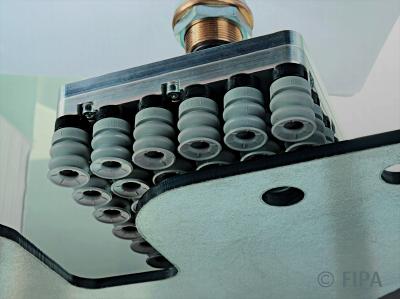 Strong financial performance in 2010 and a restructuring of debt profiles have left major petrochemical producers in good shape to contemplate the reshaping of their portfolios through merger and acquisition activity (M&A). However, reduced debt availability has seen private equity players constrained in their ability to engage in bigger purchases.
Strong financial performance in 2010 and a restructuring of debt profiles have left major petrochemical producers in good shape to contemplate the reshaping of their portfolios through merger and acquisition activity (M&A). However, reduced debt availability has seen private equity players constrained in their ability to engage in bigger purchases.
From a fairly quiet base of M&A activity post-2008 until mid-2010, the chemical industry has seen a sudden spate of deals, with several major outright acquisitions but also plenty of product line divestments and rationalizations.
The most recent deals to hit the headlines were Belgium-based chemical and plastics producer Solvay’s agreement to buy French producer Rhodia for €3.4bn ($4.9bn), and Switzerland-based performance chemical maker Clariant’s $2.7bn bid for Germany-based Sud-Chemie. These followed very closely on the heels of the $9.7bn bid from investment vehicle Berkshire Hathaway for specialty chemical maker Lubrizol, both based in the US.
But the past nine months have seen plenty of activity at the business unit level. UK-based petchem firm INEOS has taken full control of its styrenics joint venture with Canada-based NOVA Chemicals ahead of creating a joint venture with Germany-based BASF’s Styrolution.
The UK’s Yule Catto has acquired the PolymerLatex business, based in Germany; Netherlands-based paints and specialties maker Akzo-Nobel has bought US-based Dow Chemical’s powder coatings business; Arkema of France has acquired compatriot Total Petrochemicals’ coatings resins and photocure chemical activities, and Germany’s LANXESS has bought Netherlands-based DSM’s elastomers business.
But the action does not stop at the borders of the US and Europe. Asian firms are increasingly looking to pick up technology and market access via purchases in these regions. There has, for instance, been a spike of activity in the polyethylene terephthalate (PET) resin sector, with Thailand’s Indorama Ventures picking up a series of plants in Poland, the US and Mexico.
But the real driver is the Chinese state companies, who have made half a dozen deals in the past year, notably taking a $1bn 50% share in INEOS’s European refineries, full control of Hungary’s BorsodChem, the polyurethane (PU) and polyvinyl chloride (PVC) producer, and acquiring silicon materials specialist Elkem from Orkla in Norway and leading agrochemicals producer Makhteshim-Agan in Israel.
One aspect of the market that may hinder intra-European restructuring is that after several decades of M&A activity, many products are in concentrated ownership already. In acrylonitrile-butadiene-styrene (ABS), polyvinyl chloride (PVC), polycarbonate (PC) and polyurethanes (PUs), for instance, there are only three or four major protagonists.
What next? News that Dow might be looking for a buyer for four of its polypropylene (PP) plants in the US and Europe, and its PP technology business, may be the harbinger of more moves in this sector. The polymer has lost out in performance terms to polyethylene (PE) in recent years and is finding it harder to compete.
Propylene is increasingly valued above ethylene and looks set to get tighter in supply as crackers run on lighter feedstocks, so other PP producers may be looking at their business for divestment or joint venturing in the long term.
So how the reshaping will play out is not clear cut. Market concentration, private equity versus trade buyers, integration of production chains and the drive to globalize by the larger Asian players all need to be taken into account.
Such issues will be the subject of this year’s ICIS/Booz & Company CEO Roundtable on European Petrochemicals, to be held in Brussels in May. This is the fourth annual meeting in this series. Outcomes from the discussion will be reported in ICIS Chemical Business in June.
Source : www.icis.com





